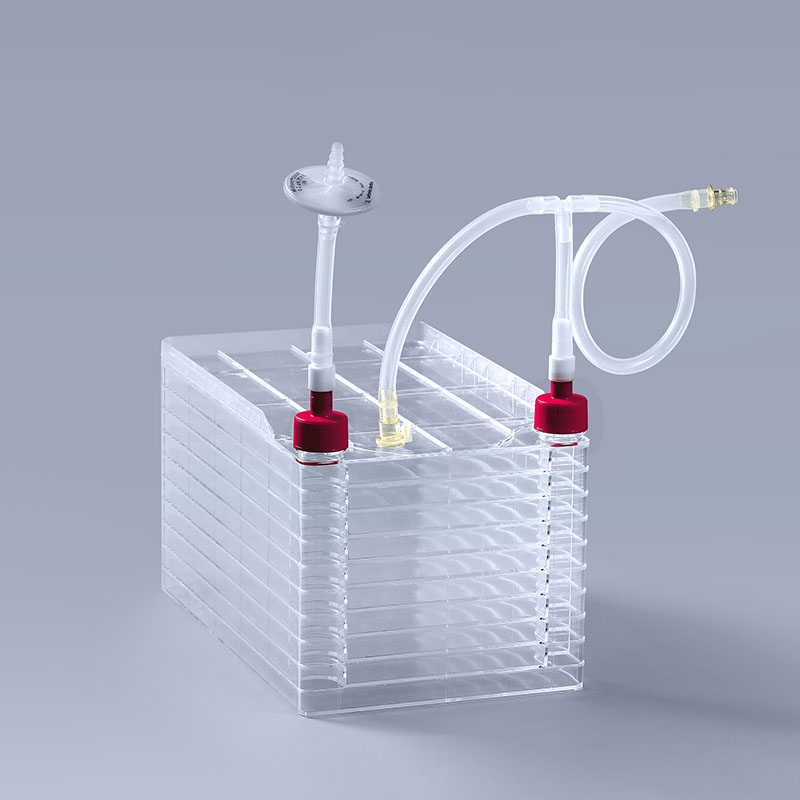With the continuous development in the field of biopharmaceuticals, cell factories, as multi-layered structures for cell cultivation, are increasingly becoming the primary tools for large-scale cell culture. Their unique advantages lie in their multi-layered design and dedicated piping systems, which enhance production efficiency and reduce exogenous risks.
Advantages of Multi-layered Structure:
Cell factories adopt a multi-layered design that effectively increases the cultivation surface area by stacking layers. This design not only saves production space but also enables large-scale cell culture within the same space, meeting the demands for a large number of cells in biopharmaceutical and vaccine production, among other fields.

Dedicated Piping Systems:
Cell factories are equipped with dedicated piping systems for the closed transfer of liquids. This system effectively reduces the risk of exogenous contamination during operations, ensuring cleanliness and safety throughout the production process. Additionally, dedicated piping systems enable precise measurement and automatic delivery of liquids, thereby improving production efficiency, reducing the need for manual operations, and minimizing the possibility of human errors.
Efficient Production:
Cell factories with piping systems make the production process more efficient. Production personnel can perform closed transfers between containers at different levels, avoiding cross-contamination and the risk of cell damage during cell cultivation. This efficient production mode not only increases production efficiency but also ensures product quality and stability.
In summary, cell factories with piping systems achieve efficient, safe, and controllable production processes through multi-layered design and the provision of dedicated piping systems. In fields such as biopharmaceuticals and vaccine production, they will continue to play a vital role, providing strong support and assurance for the industry's development and progress.
The FAI climbed 5.9 percent year-on-year in the first 11 months of 2018, quickening from the 5.7-percent growth in Jan-Oct, the National Bureau of Statistics (NBS) said Friday in an online statement.
The key indicator of investment, dubbed a major growth driver, hit the bottom in August and has since started to rebound steadily.
In the face of emerging economic challenges home and abroad, China has stepped up efforts to stabilize investment, in particular rolling out measures to motivate private investors and channel funds into infrastructure.
Friday's data showed private investment, accounting for more than 60 percent of the total FAI, expanded by a brisk 8.7 percent.
NBS spokesperson Mao Shengyong said funds into weak economic links registered rapid increases as investment in environmental protection and agriculture jumped 42 percent and 12.5 percent respectively, much faster than the average.
In breakdown, investment in high-tech and equipment manufacturing remained vigorous with 16.1-percent and 11.6-percent increases respectively in the first 11 months. Infrastructure investment gained 3.7 percent, staying flat. Investment in property development rose 9.7 percent, also unchanged.
 English
English


















































